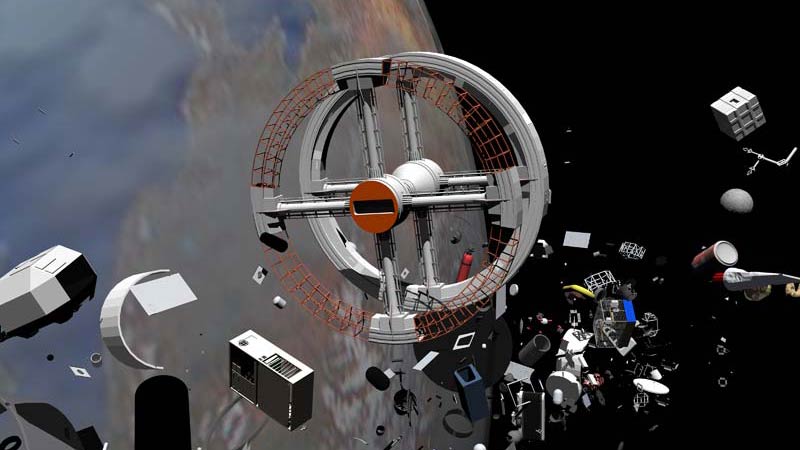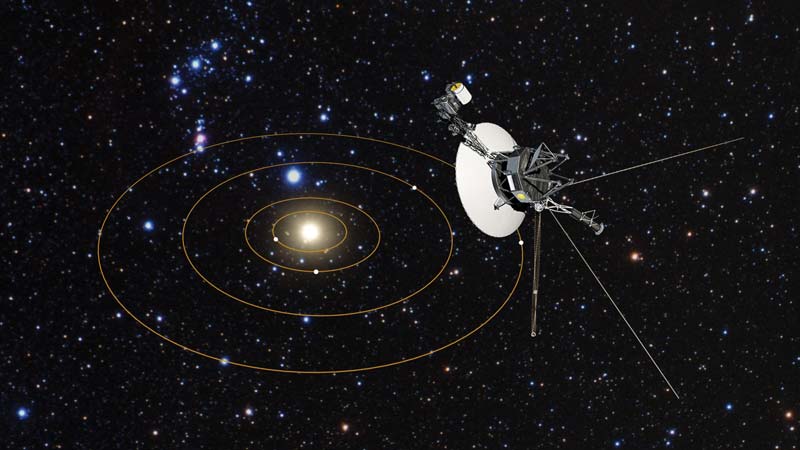Table of Contents

NASA Solar System Ambassador,
Astronomical League Master of Outreach,
Cruise ship speaker on Astronomy & space science,
Amateur astronomer and photographer for 50 years
Spacejunk
The skies above our heads are getting crowded. While there are 2666 active satellites as of April 1 2020, it is estimated there are over 900,000 derelict satellites, rocket bodies and other objects able to be tracked.
The US Space Surveillance Network estimates there are over 128 million other pieces under 1 cm like nuts, screws or paint flecks. Small things like that don’t sound dangerous until you consider they are travelling at speeds up to 30,000 km/hour!

SpaceX, Amazon and other companies have announced plans to launch as many as 50,000 more satellites by the end of the decade. It’s getting awfully crowded up there. If an impact occurs there can be a cascading effect called the Kessler syndrome. This significantly increases the risk of additional collisions and catastrophic damage to many satellites.
For these reasons forward-thinking companies and governments have deliberately de-orbited failing satellites or spent rocket stages. They then either burn up in the atmosphere on reentry or fall in a safe place. But where is the safest place to crash a dead satellite?
Point Nemo
The Pole of Inaccessibility is a location that is the most challenging to reach. When referred to with respect to coastlines, Point Nemo is a spot in the south Pacific ocean that is the furthest you can travel from land.

It is located at 48°52.6′S 123°23.6′W, about 2,688 kilometers from the nearest land. These point are the Pitcairn Islands, to the north; The Easter Islands, to the northeast; and Antarctica to the south.
The location was named after Captain Nemo in Jules Verne’s 20,000 Leagues Under the Sea.
“Its most attractive feature for controlled re-entries is that nobody is living there. Coincidentally, it is also biologically not very diverse. So it gets used as a dumping ground—’space graveyard’ would be a more polite term”.” said Stijn Lemmens, a space debris expert at the European Space Agency in Darmstadt, Germany.
Governments have been dumping satellites at Point Nemo since 1971. By far the largest object resting at Point Nemo is Russia’s MIR space lab. It which weighed 120 tonnes when it was deliberately crashed here in 2001.
Point Nemo is routinely used by Russian Progress capsules, which supply the International Space Station. Other spacecraft resting there include six Salyut stations, Japan’s Aerospace Exploration Agency H-II Transfer Vehicle, at least one SpaceX booster and ESA’s Automated Transfer Vehicle.
According to Wikipedia, a total of more than 263 spacecraft were disposed in this area between 1971 and 2016.
The Future of the ISS
Even the massive, 420 ton ISS will not last forever in orbit. When it is no longer viable (sometime after 2024), it will be sent to a watery grave at Point Nemo.
But don’t make the mistake of picturing a big mound of dead satellites at the bottom of the ocean. Between the stress of reentry tearing pieces off a satellite, the tremendous impact on the surface and subsurface ocean currents, debris is scattered over hundreds of square miles.
Ironically the closest living humans to Point Nemo are the astronauts and cosmonauts living aboard the International Space Station. When the ISS passes over Point Nemo it is about 360 km above Earth – about 7 times closer than the nearest coastline.
Engineers are already designing the next generation of spacecraft so more components will completely disintegrate when deorbited and not survive reentry. Both NASA and the ESA are making parts (where possible) from aluminum rather than titanium. An aluminum fuel tank has a much lower melting point than its titanium counterpart and is much less likely to hit the Earth.
Why not just somehow ‘lasso’ dead spacecraft and pull them out of the way? Aside from significant technical challenges, there is a political problem. Who owns a dead satellite? If another nation attempted to capture a dead US spy satellite it could be construed as an act of war.
So if you thought you could ‘get away from it all’ by traveling to the most distant point on Earth from land…watch out!







Have the international sailing and shipping communities been informed about Point Nemo? Being hit by a plunging, burning Telstar while peacefully cruising the sea could really mess up one’s whole day!